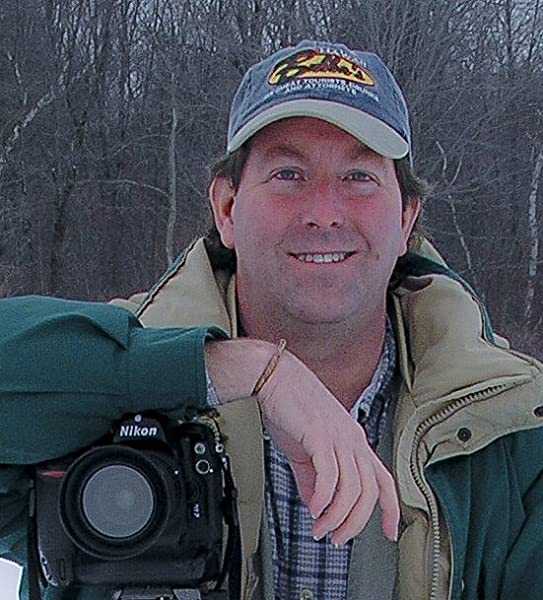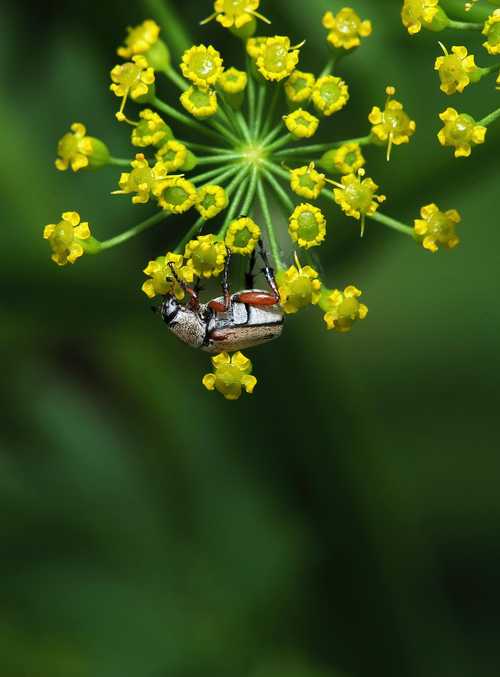
I begin with a definition of biodiversity.
Biodiversity measures the variety of life on Earth, including the richness of species, the genetic variation required for hybrid vigor, and the breathtaking variety of unique ecosystems. Biodiversity also includes the interactions between living things to create a self-sustaining, biologically balanced, healthy world. It’s why we have paramecia and pangolins, elephants and echidnas, orchids and owls, wheat and whales.
It doesn’t take much to get a sense of the extent of this biodiversity, especially in the warmer months. It’s literally everywhere. Get up early one morning, the hour before dawn, and go for a walk in the woods, or in the tall grasslands down the road, or across a dewy meadow, or along a stream. Find a place to sit. Be patient, and just listen to the dawn chorus. Or, do the same, but in the late evening. Walk near a marsh, or a lake, or a pond, find a place to sit, and listen to the evening chorus. The experience will affect you deeply, if you allow it to.
Biologists, especially ecologists, monitor biodiversity in various ways. Some monitoring is for academic reasons, the never-ending quest of science to know, to understand.
Others monitor biodiversity, looking for places where we overstep, human canaries in the coal mine who speak out against chemical dumping, improper disposal of toxins, the hazard of forest clearcutting, greenhouse gas emissions, fertilizer runoff, and a hundred other ecological crimes against the planet and its inhabitants—including ourselves.
Sometimes, the decision-makers who pay attention to these environmental watchdogs listen and act. DDT and other chemicals were effectively banned after Rachel Carson published Silent Spring in 1962. Barry Commoner, the father of the modern ecology movement, made the world pause when he published his four ecological laws: Everything is connected to everything else; Everything must go somewhere; Nature knows best; and There is no such thing as a free lunch. You know, those are so important that they’re worth repeating. Everything is connected to everything else; Everything must go somewhere; Nature knows best; and There is no such thing as a free lunch.
Others, like Jacques Cousteau, Sylvia Earle, David Attenborough, EO Wilson, and Loren Eiseley, combine passion and logic, visual storytelling and compelling truths, to motivate us to be more thoughtful and responsible stewards. Even young people can be ecological heroes: Greta Thunberg brought a human and humane face to the impending climate change crisis. And while all of these efforts had impact, and often brought about changes in human behavior, hubris is a powerful motivator.
In the interest of growth-related profit, great swaths of enormously biodiverse landscapes—the Tallgrass Prairie, California’s San Joaquin Valley, the rolling hills of Washington’s Palouse—are cleared to make way for the short-term potential of mono-crops, such as palm oil, soy, wheat, corn, cotton, and sugar cane. The downside of this practice has been known since the early 20th century. When Henry Ford established Fordlandia, for example, his ill-fated American city deep in the Brazilian Amazon, he cleared the tropical forest to make way for the rubber trees he needed to produce latex for rubber tires. He planted the trees in ruler-straight rows, which quickly succumbed to infestations of pests in the now vulnerable, concentrated grid of trees. The hybrid vigor of the forest, the physiological firewall that originally protected everything in the biosphere, was gone, and as I described in an earlier program, not a single drop of rubber from the venture ever made its way onto a Ford automobile. Hubris.
Before the advent of modern farming techniques, there was no need for pesticides, or soil additives, or extensive crop watering infrastructure, or fertilizers, because nature took care of that for herself. But when mono-crop agriculture became the norm, it suddenly became necessary to force the land to produce. Gone was the elegant natural system that took care of itself; it was replaced by a system based on brute force. Man against nature, nature as the enemy, an enemy within which we are an integral part. Oops.
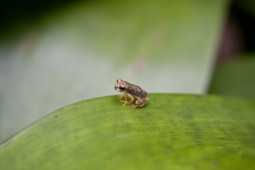
When the natural botanical ecosystem is disrupted or destroyed—forest, jungle, grassland, prairie, chaparral, seashore—the animal life that’s intertwined with the botanical diversity of the environment is equally disrupted. Everything from bacteria that help to keep the soil healthy to the largest mammals at the top of the food chain suddenly find themselves imperiled by the abrupt loss of habitat, their support framework, their life.
If you’re having trouble imagining or believing this scenario, let me offer an analogy of the human sort. Every morning, you wake up in your comfortable bed, in the warmth and safety of your home. You wash up in your well-appointed bathroom, then head down to your well-equipped kitchen where you brew a nice cup of designer coffee and prepare a hearty breakfast to keep you well-nourished until your next meal, which will happen sometime around midday, in a restaurant of your choosing.
But one morning, you wake up and find yourself inexplicably lying on the leeward side of a great sand dune, 120 feet high. Dazed, confused, sweating profusely in the growing heat of the morning, you stand up and trek to the top of the dune, where you see nothing but more dunes, marching off into the haze of distance in all directions. No home, no bedroom, no kitchen, no coffee shop, no grocery store, no pharmacy, no doctor—just sand dunes, sun, and the occasional tuft of silica-rich and entirely inedible desert grass. Welcome to your new home. Suck it up and make it work—or, more likely, don’t.
The naturally biodiverse web of life works because it has evolved over the eons as a balanced system, organically able to change and adapt as required, weaving and dodging to overcome the challenges of the biological lottery. Some individuals win; some lose. But the system survives, and each time it emerges stronger and more resilient, for having run the gauntlet.
I’m telling you this story because biodiversity matters—not just to the scientific community, but to literally every living thing on this planet. Changes in the biodiversity of an ecosystem, changes that are all-too-often caused by humans, are equally all-too-often invisible to us. On June 22nd, 1969, the Cuyahoga River in Cleveland, Ohio caught fire. You heard that correctly: the river caught fire, shooting flames five stories into the sky. You’d think that a large river flowing through a major American city that was so polluted with industrial chemicals that a flare fired from a passing train ignited it, might have caused somebody to notice. The smell alone, never mind the lack of aquatic life, should have been a glaring clue. Nope. Sometimes we choose not to notice what’s right in front of us; other times we can’t notice, because we’re looking at the problem with the wrong set of senses.
Here’s an example. In the late 1980s, sound ecologist Bernie Krause recorded the rich and varied soundscape of an idyllic place in California called Lincoln Meadow. The air was filled with the joyous cacophony of birdsong. He recorded there for several consecutive years, always in the same place with the same gear.
At one point, a logging company negotiated an agreement to “selectively log” the forest at Lincoln Meadow—meaning, only remove some of the trees. Krause continued to record, during and for several years after the logging.
To the visual observer, nothing changed. The selective removal of some trees made no difference in the look of the forest. But the sound? It went from being sonically raucous and alive to sonically moribund. It went from the joyous voices of a diverse community to what I can only call the singular voice of loneliness. A comparison of the before and after soundscapes is one of the saddest things I’ve ever heard.
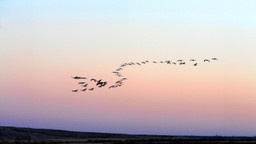
One of the saddest things I’ve ever heard. What an important word that is—Heard. After being selectively logged, the forest at Lincoln Meadow looked, smelled and felt the same. The resin-scented old growth air tasted exactly the same as it tasted before being logged. But it sounded different. Something about the biodiversity of the place had changed, something existentially important. But the only way to tell was through sound—or perhaps better said, the lack of it.
It would be easy to brush off Krause’s findings as anecdotal or coincidental. “The birds were having a bad morning when he recorded after the area was logged, so they weren’t singing that day.” Sure—except that he recorded in exactly the same place, using the same setup, year after year, always with the same melancholy result. The logging affected the biosphere, whether the impact was visible or not. Voices had disappeared, because species had disappeared. Bioacoustically, Lincoln Meadows was now a different place.
The use of sound as an indicator of ecosystem health—what we call bioacoustics—is not new, but it’s only in the last decade or so that it has become widely accepted as a scientifically reliable indicator. Dr. Krause’s work is one example, but there are others. During the 1960s, Roger Payne did seminal work on echolocation using bats, moths, and owls as his test subjects. He isn’t known very well for that work, but he IS known for his work with whales—specifically his study of the songs of the humpback whale, which resulted in the release of a massively popular album in 1970 and the beginnings of the global anti-whaling movement.
Jack Greenhalgh, whom I interviewed earlier on The Natural Curiosity Project, has done extensive work on the health and restoration of freshwater ponds, using non-invasive sound monitoring to create successful ecological recovery strategies.
My friend Dick Todd, based in rural Illinois, records the seasonal changes in the sounds of freshwater lakes, ponds and rivers to track the health of local insect species.
Sound Ecologist Gordon Hempton, who calls himself The Sound Tracker, has dedicated his career—no, make that his life—to the preservation of naturally quiet places around the world, places that are free of human-generated sound. Gordon defines a quiet place as a location where it’s possible to sit for a minimum of 15 minutes without hearing any human-generated noise. In the middle of the 20th century, there were thousands of these quiet places in the United States; today, there are 12. Noise matters. It pollutes the environment as much as chemical runoff does. When wildlife can’t vocalize or stridulate effectively because they’re drowned out by human-made noise, they can’t call to each other, they can’t find mates, they can’t locate prey, and they can’t hear predators approaching.
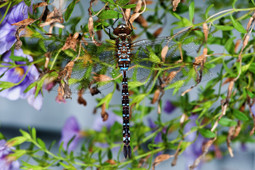
In the southern hemisphere, where reefs are dying because of warming oceans brought about by a changing climate, researchers have come upon a remarkable discovery that they hope will help them save at least some of the planet’s reef ecosystems.
When the coral polyps and other reef-based species reproduce, they eject clouds of eggs and sperm, which combine to create vast numbers of tiny larvae. The larvae drift randomly in the water column, eventually settling down and establishing themselves as new colonies on or near the living reef.
But, there’s a problem. As the oceans warm, the mature reef polyps die. But they are important links in the food chain, because as they filter nourishment out of the water column with their feather-like gills, they also provide food for organisms like parrotfish, sea snails, and sea stars. So when the polyps die, the reef-dwelling animals that depend on them for food die off as well—or they leave. That includes parrotfish and snapping shrimp, animals that create the voice of a healthy coral reef. And when they depart, the reef … goes … silent.
Everything is connected to everything else. Everything must go somewhere. Nature knows best. There is no such thing as a free lunch.
But researchers wanted to test a wild hypothesis: what if those free-swimming, embryonic coral polyps don’t just wander randomly in the current? What if there is something invisible that guides them, in the same way that the electromagnetic lines of force that girdle the planet help birds and monarch butterflies and countless other species complete their semi-annual migratory journeys of thousands of miles?
For years, researchers have believed that sound plays a key role in maintaining reef health, but they had no way to prove it. But the dying reefs gave them the perfect opportunity to test their theory. They installed waterproof speakers on silent, dying reefs. Then, they played the sounds of a healthy reef through the speakers: the crunching of parrotfish jaws against coral, the frying bacon sound of thousands of snapping shrimp, the low-frequency crunching and scraping of sea stars, the distant sounds of whales. And here’s what they saw: those free-floating little larvae took notice, and deliberately followed the sound back to the reef and began to establish themselves as permanent residents in large numbers. Life returned, because of sound.
Now, before you say anything, yes, the warming waters may yet kill off the reef polyps, especially those that establish themselves in the shallower, warmer water near the top of the reef. But the polyps that settle in the cooler, deeper water may well survive. Time will tell.
The point is that sound, as an indicator and catalyst of biodiversity, is as valid a measure as any other, and may well prove to be more important than some. It’s a passive, non-invasive technique that can be carried on for long periods, providing researchers with trend data that can be used in concert with other insights to provide a richer, more meaningful, more nuanced understanding of the cause and effect criteria that affect biodiverse environments.
So, here’s my request to you, the listener. Consider this your homework assignment. Go outside and listen, and be deliberate about it. Go for a walk, and don’t just passively hear—really, really listen. You’ll soon become aware of how diverse the sounds are, when they happen, why they happen, who’s making them, and where. You’ll begin to understand the interactions among the animals making the sounds, and what those interactions mean. You’ll start to become a true practitioner of fieldcraft. When you see an entire flotilla of water birds suddenly lift off the lake as one, calling loudly and chaotically, you’ll automatically look straight up, because there will undoubtedly be a raptor—an eagle, an osprey, a peregrine, flying overhead, looking for a meal. You’ll see a flock of chickadees incessantly and aggressively flying in and out of a pine tree, caterwauling as only chickadees can, and you’ll know that there is almost certainly a northern saw-whet owl, the sworn enemy of the chickadee, sitting quietly on a branch of that tree.
But more than anything, you’ll find yourself filled with a growing sense of awe, wonder, and appreciation for this amazing thing that we call biodiversity—and, if you’re like most of us who take the time to listen to nature’s voice, you’ll become a sworn protector of it.
Welcome to membership in the most important club on Earth.
🎧 If you’d prefer to listen to the Podcast version of this essay, with some wonderful embedded natural sounds, please go here.
All photos courtesy of Steven Shepard
Earth.fm is a completely free streaming service of 1000+ nature sounds from around the world, offering natural soundscapes and guided meditations for people who wish to listen to nature, relax, and become more connected. Launched in 2022, Earth.fm is a non-profit and a 1% for the Planet Environmental Partner.
Check out our recordings of nature ambience from sound recordists and artists spanning the globe, our thematic playlists of immersive soundscapes and our Wind Is the Original Radio podcast.
You can join the Earth.fm family by signing up for our newsletter of weekly inspiration for your precious ears, or become a member to enjoy the extra Earth.fm features and goodies and support us on our mission.
Subscription fees contribute to growing our library of authentic nature sounds, research into topics like noise pollution and the connection between nature and mental wellbeing, as well as funding grants that support emerging nature sound recordists from underprivileged communities.

